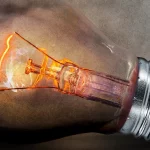Hunters nationwide know the thrill of the chase—finding the perfect spot, taking aim, and finally, pulling the trigger. Yet, one challenge remains for many: tracking the deer after the shot. It’s a common scenario that even seasoned hunters face. The deer runs off, and locating it becomes a daunting task. But fear not; there are tried-and-true methods to ensure your successful shot ends with a successful recovery.
Timing and Location
This crucial aspect of hunting occurs in forests and fields across the United States, particularly during the fall hunting season. The timing is significant, as hunters often have a limited window before the trail goes cold. With the rapid onset of winter, the landscape can quickly change, making tracking more challenging. Understanding the environment and its impact on blood-trailing is vital for any hunter aiming to retrieve their game efficiently.
Understanding Blood-Trailing Techniques
Blood trailing is an essential skill that can make or break a hunting expedition. After shooting a deer, it is essential to wait at least 30 minutes before beginning the search. This pause allows the deer to succumb to its injuries, reducing the likelihood of spooking it if it is mobile. Experienced hunters recommend marking the initial point of the shot with a piece of brightly colored tape or a small flag. This provides a reference point as you begin following the trail.
Blood-trailing involves more than just following a red path. Hunters must be observant, looking for broken branches, disturbed foliage, and tracks. The color and consistency of the blood can also provide clues about the shot's impact. Bright red blood typically indicates a lung shot, while darker blood could suggest a liver hit. Each scenario demands a different approach, with patience and keen observation being the hunter's best allies.
Expert Insights on Effective Tracking
Many experts emphasize the importance of minimizing noise and movement when tracking a deer. Quietly and slowly following the trail increases the chances of finding the deer if it hasn’t succumbed immediately. Bill Thompson, a veteran hunter with over 20 years of experience, advises, “Always move at a pace where you can constantly scan your surroundings. The deer might not be far, and any sudden noise could cause it to bolt further.”
Additionally, hunters should carry a flashlight, even during daylight hours. Shadows in dense woods can obscure vital signs, and a flashlight can help illuminate blood spots that might otherwise be missed. Some hunters also use specialized tracking lights highlighting blood with ultraviolet wavelengths, making the trail more straightforward to see in challenging conditions.
The Role of Weather and Terrain
Weather plays a crucial role in how effectively a hunter can track a deer. Rain can wash away blood trails, while snow can, depending on its depth and density, both obscure and reveal tracks. Understanding how different weather conditions affect tracking is essential. In rainy conditions, hunters are advised to move quickly but cautiously, as the trail might disappear entirely if not followed promptly.
Terrain also significantly impacts tracking. In wooded areas, fallen leaves and underbrush can make it challenging to spot blood, while open fields might present fewer obstacles but can scatter blood droplets over a larger area. Hunters must adapt their strategies to the specific terrain they are navigating, always maintaining awareness of their surroundings.
Technological Aids in Blood-Trailing
In recent years, technology has become an ally for hunters seeking to improve their blood-trailing skills. GPS devices and mapping apps can help hunters mark and remember key locations in the tracking process. Some apps allow hunters to document the trail, noting where blood was found and any other significant signs, creating a comprehensive map of the pursuit.
Drones equipped with cameras are also becoming popular among hunters. They provide a bird' s-eye view that can reveal trails not visible from the ground. However, experts caution that while technology can enhance tracking, it should not replace fundamental skills and instincts developed through experience.
Forward-Looking Insights
Mastering blood-trailing techniques remains paramount as hunting seasons continue to draw outdoor enthusiasts into the wild. With the right approach and tools, hunters can ensure they not only make a successful shot but also recover their game, respecting the animal and the spirit of the hunt. Integrating traditional methods with modern technology promises to enhance the hunting experience, offering seasoned and novice hunters new ways to engage with this time-honored pursuit.

Lucy Davis is an enthusiastic and passionate young writer who has a knack for bringing stories to life. With a fresh perspective and an insatiable curiosity, she delves into the world of smart home technology, interior design, and lifestyle trends, keeping readers engaged and informed.















